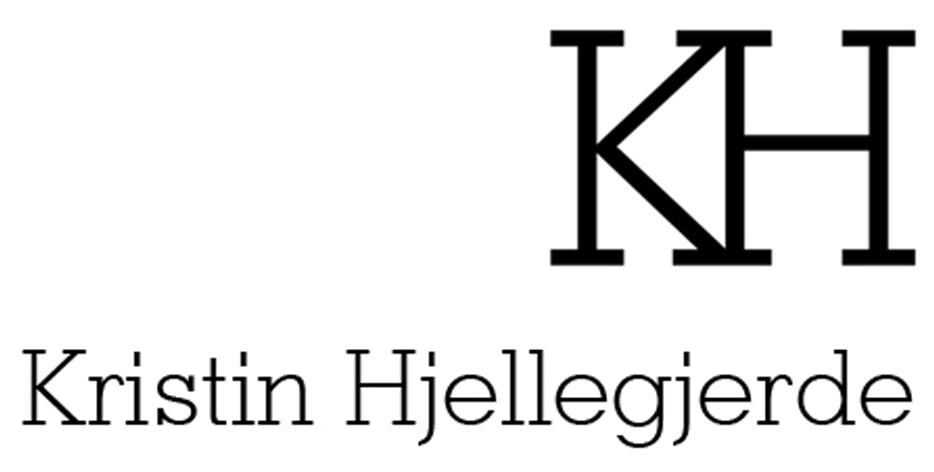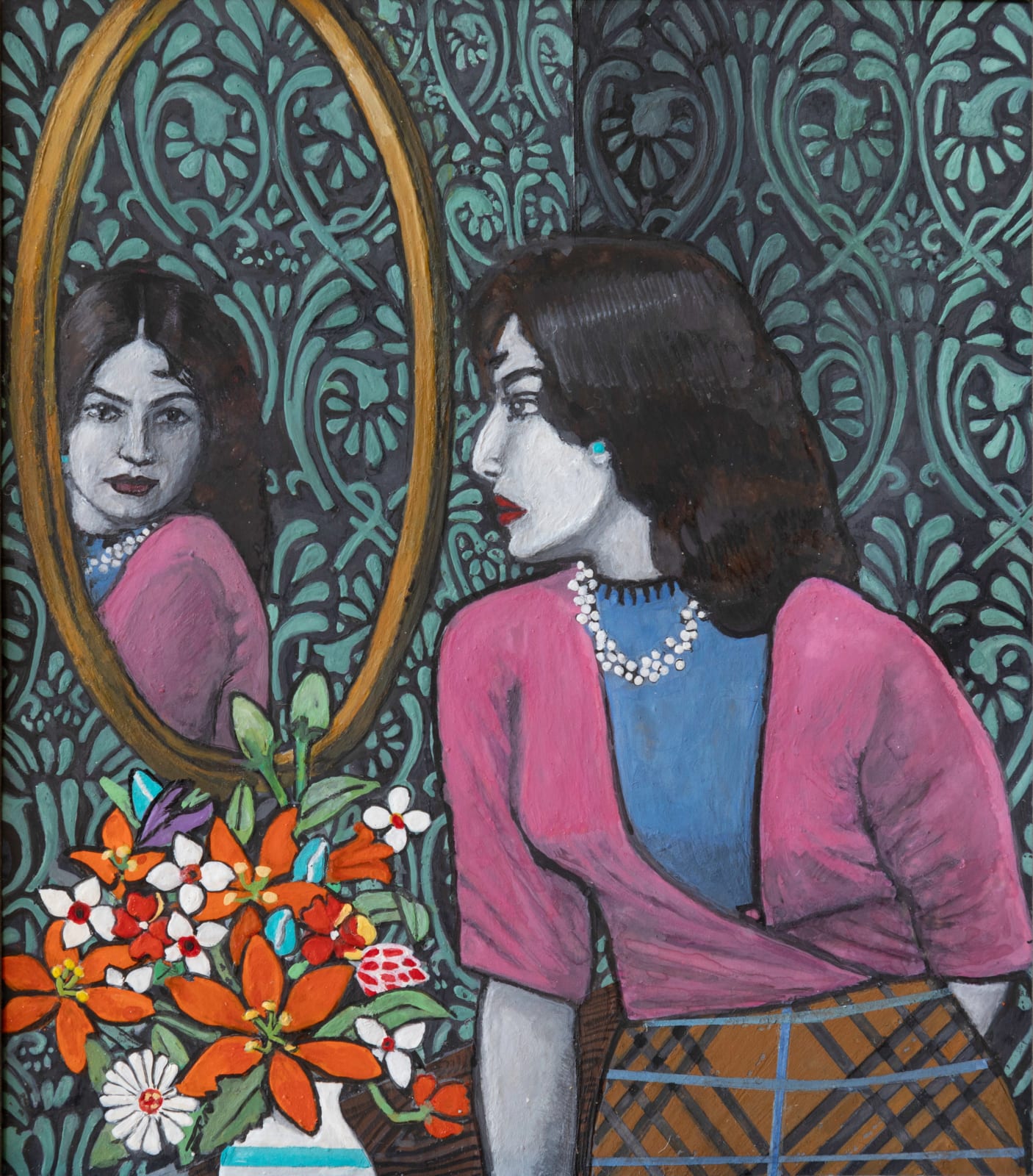Soheila Sokhanvari
The Silent Mirror (Portrait of Forough Farrokhzad) , 2024
Egg tempera on calf vellum
13 x 11.4 cm
5 1/8 x 4 1/2 in
5 1/8 x 4 1/2 in
Copyright The Artist
The Silent Mirror (Portrait of Forough Farrokhzad) 2024 In Night’s Cold Street “… Listen to my distant voice in the heavy mist of dawn's prayer chants, and in silent mirrors...
The Silent Mirror (Portrait of Forough Farrokhzad) 2024
In Night’s Cold Street
“… Listen to my distant voice
in the heavy mist of dawn's prayer chants,
and in silent mirrors see how
with what is left of my hands
I touch, once more, all dreams' innermost dark,
and imprint my heart like a bloodstain
on life's innocent riches.”
- Forough Farrokhzad
As a feminist woman in a misogynistic society, her vision caged in the vastness of a mirror, the mirror transforms her, granting her refuge in her dreams. In this mirror she can travel back through her memory from experience to experience, seeing the face of herself as a younger woman looking back at her - two large eyes that stay open, see too much, and refuse to lie. An inner autumnal melancholy against an outer regenerative spring, forces of song against silence, gestation against decay, success against failure. Trapped in the cocoon of her memories she travels to the past through the mirror, like some kind of Alice in Wonderland.
Here, in this jungle of regrets and retributions, a woman must regenerate rather than surrender to shattered ideals.
Under the dislocating influences of such silent mirrors, revealing in the harsh clarity of its spring-filled surface, nature's rejuvenation stirs up in this lonely woman the torrential enumerations of pent-up nostalgias. As a divorcee woman in front of a mirror, she must witness the absence of her "other self”, she looks at her silence reflected in the mirror that echos the silence surrounding her.
Farrokhzad was one of Iran’s greatest modernist writers, whose poetry often dealt with the subject of female desire. She was born into a middle-class family in Tehran, shortly before the pro-Western Iranian king, Reza Shah, passed a law banning the female veil and women were allowed into schools and universities. Society, however, remained strongly patriarchal. Her poem ‘Sin’, written in 1954 at the age of 19, was considered scandalous for its unapologetic confession of infidelity: ‘I have sinned a rapturous sin / in a warm enflamed embrace’. When her husband divorced her, not long after publishing this poem in the periodical Roshanfekr (The Intellectual), she lost custody of their young son, Kamyar. This trauma led to a nervous breakdown, and she was admitted to a psychiatric unit, where she was subjected to electroshock treatment. For Farrokhzad, writing was both personal and political: in the forward to her first poetry book in 1955, she wrote of trying to ‘break the shackles binding women’s hands and feet.’ In 1961, she became one of Iran’s first female film directors with her poetic documentary The House is Black, about Iranians with leprosy. Farrokhzad died tragically young at the age of 32 in a car accident. After the Islamic revolution in 1979, her poetry was banned for over a decade and many extracts remain censored to this day.
In Night’s Cold Street
“… Listen to my distant voice
in the heavy mist of dawn's prayer chants,
and in silent mirrors see how
with what is left of my hands
I touch, once more, all dreams' innermost dark,
and imprint my heart like a bloodstain
on life's innocent riches.”
- Forough Farrokhzad
As a feminist woman in a misogynistic society, her vision caged in the vastness of a mirror, the mirror transforms her, granting her refuge in her dreams. In this mirror she can travel back through her memory from experience to experience, seeing the face of herself as a younger woman looking back at her - two large eyes that stay open, see too much, and refuse to lie. An inner autumnal melancholy against an outer regenerative spring, forces of song against silence, gestation against decay, success against failure. Trapped in the cocoon of her memories she travels to the past through the mirror, like some kind of Alice in Wonderland.
Here, in this jungle of regrets and retributions, a woman must regenerate rather than surrender to shattered ideals.
Under the dislocating influences of such silent mirrors, revealing in the harsh clarity of its spring-filled surface, nature's rejuvenation stirs up in this lonely woman the torrential enumerations of pent-up nostalgias. As a divorcee woman in front of a mirror, she must witness the absence of her "other self”, she looks at her silence reflected in the mirror that echos the silence surrounding her.
Farrokhzad was one of Iran’s greatest modernist writers, whose poetry often dealt with the subject of female desire. She was born into a middle-class family in Tehran, shortly before the pro-Western Iranian king, Reza Shah, passed a law banning the female veil and women were allowed into schools and universities. Society, however, remained strongly patriarchal. Her poem ‘Sin’, written in 1954 at the age of 19, was considered scandalous for its unapologetic confession of infidelity: ‘I have sinned a rapturous sin / in a warm enflamed embrace’. When her husband divorced her, not long after publishing this poem in the periodical Roshanfekr (The Intellectual), she lost custody of their young son, Kamyar. This trauma led to a nervous breakdown, and she was admitted to a psychiatric unit, where she was subjected to electroshock treatment. For Farrokhzad, writing was both personal and political: in the forward to her first poetry book in 1955, she wrote of trying to ‘break the shackles binding women’s hands and feet.’ In 1961, she became one of Iran’s first female film directors with her poetic documentary The House is Black, about Iranians with leprosy. Farrokhzad died tragically young at the age of 32 in a car accident. After the Islamic revolution in 1979, her poetry was banned for over a decade and many extracts remain censored to this day.

